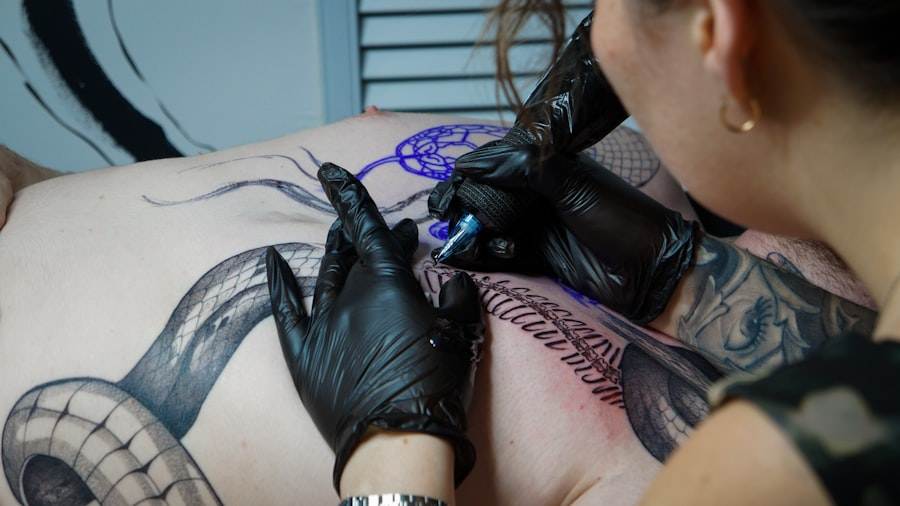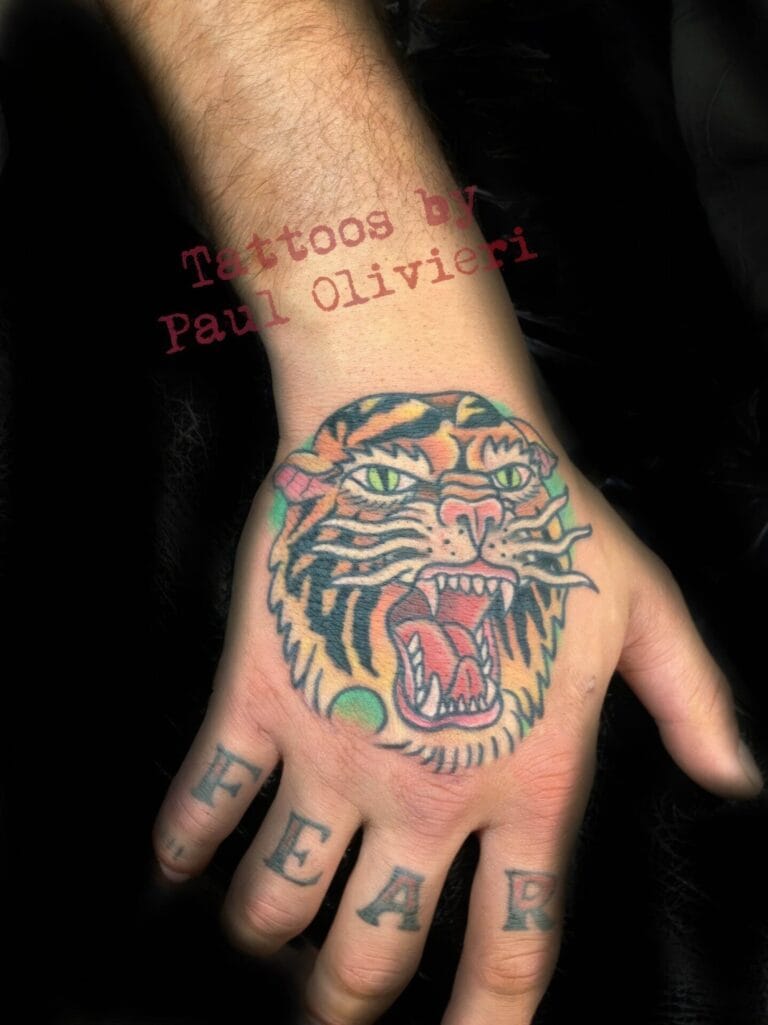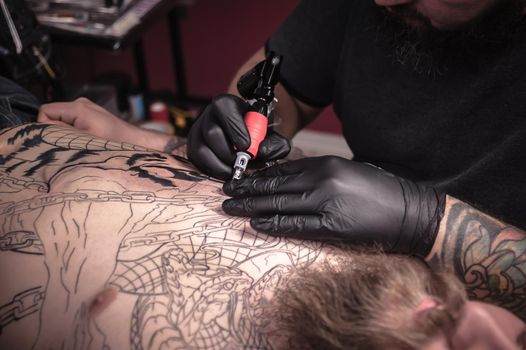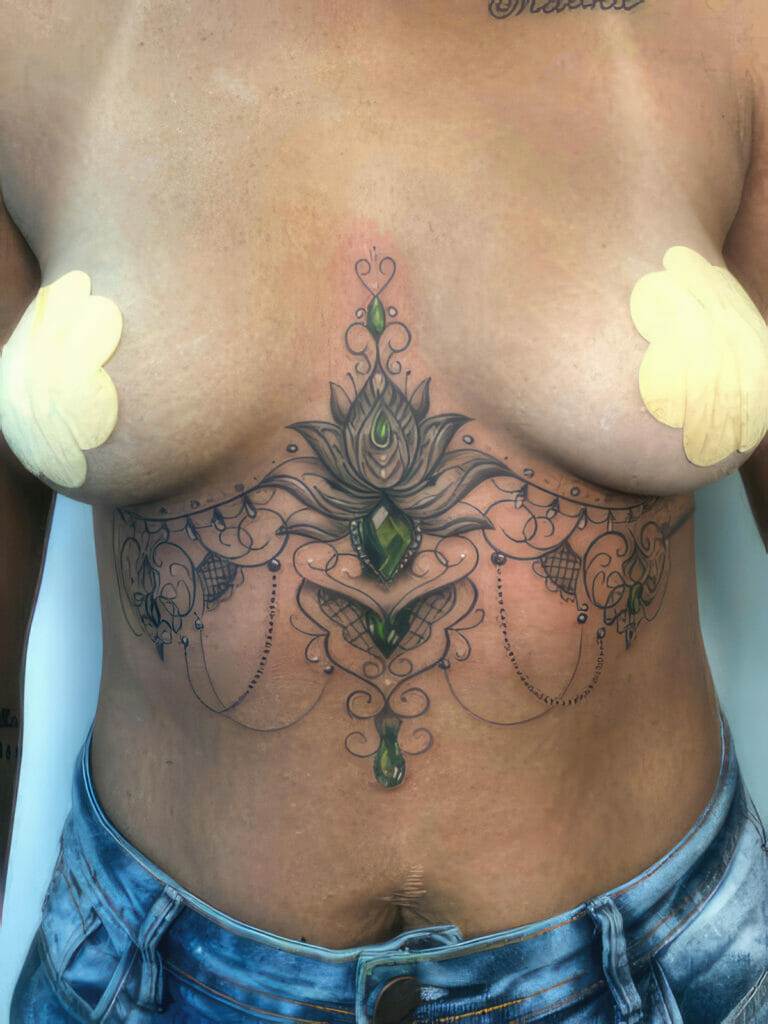
Selecting the ideal placement for your first tattoo is a significant decision that can influence not only the overall aesthetic of the design but also your personal comfort and lifestyle. The placement of a tattoo can affect how it is perceived by others, how it ages over time, and how easily it can be concealed if necessary. As a first-time tattoo recipient, it’s essential to consider various factors, including visibility, pain levels, and personal significance.
The right placement can enhance the meaning of your tattoo and ensure that it resonates with you for years to come. When contemplating placement, think about your daily life and how often you want your tattoo to be seen. Some individuals prefer tattoos that are easily visible, serving as a constant reminder of their significance.
Others may desire a more private location, allowing them to share their tattoo only with those they choose. Additionally, consider your career and social environment; certain professions may have restrictions on visible tattoos, which could influence your decision. Ultimately, the placement should reflect your personality and lifestyle while also considering the long-term implications of having a permanent mark on your body.
Key Takeaways
- Consider the visibility and potential impact on your career when choosing the placement for your first tattoo
- Popular placement options for first tattoos include the wrist, forearm, upper arm, and back
- Take into account the size, shape, and orientation of your tattoo design when deciding on placement
- Placement options for concealing your first tattoo include the upper thigh, ribcage, and back
- Showcasing your first tattoo can be achieved with placements on the forearm, wrist, or collarbone
Popular Placement Options for First Tattoos
The Wrist: A Delicate yet Versatile Option
The wrist is a favored choice for many first-timers, as it offers a small canvas that can accommodate delicate designs. Tattoos on the wrist are often easy to show off or conceal with a watch or bracelet, making them versatile for various settings. Additionally, the wrist is a location that many people find meaningful, as it is frequently associated with personal mantras or symbols that hold special significance.
The Forearm: A Canvas for Self-Expression
Another common area for first tattoos is the forearm. This placement allows for larger designs while still being relatively easy to cover if needed. The forearm provides ample space for intricate artwork or text, making it an appealing option for those who want to make a statement with their first tattoo. Moreover, forearm tattoos can be easily displayed or hidden depending on the occasion, offering flexibility in how you present your body art to the world.
Other Popular Placements: Ankle and Shoulder
Other popular placements include the ankle and shoulder, both of which offer unique aesthetics and can be personalized to suit individual tastes.
Considerations for Placement Based on Tattoo Design

The design of your tattoo plays a crucial role in determining its ideal placement. Intricate designs with fine details may require larger areas of skin to ensure that the artwork is not lost or distorted over time. For example, a detailed floral design might look stunning on the upper arm or back, where there is enough space to showcase its complexity.
Conversely, simpler designs or symbols may be well-suited for smaller areas like the wrist or behind the ear, where they can maintain their clarity without overwhelming the space. Additionally, consider how the design interacts with the contours of your body. Tattoos that flow with natural lines—such as those on the ribcage or along the spine—can create a visually appealing effect that enhances both the artwork and your physique.
It’s also important to think about how the tattoo will age; certain placements may stretch or fade more quickly than others due to factors like sun exposure or skin elasticity. By aligning your design choice with an appropriate placement, you can ensure that your tattoo remains vibrant and meaningful throughout the years.
Placement Options for Concealing Your First Tattoo
For those who prefer to keep their tattoos private or need to adhere to professional dress codes, there are several effective placement options for concealing your first tattoo. The upper thigh is an excellent choice for those seeking discretion; it can be easily covered by clothing while still allowing for larger designs. This area also provides a relatively flat surface that can accommodate intricate artwork without distortion.
Another popular option for concealment is the back of the shoulder or upper back. These areas can be hidden under clothing or swimwear while still offering enough space for detailed designs. Additionally, tattoos in these locations can be easily revealed when desired, making them a versatile choice for individuals who want the option to showcase their body art selectively.
The side of the ribcage is another area that offers concealment while allowing for larger pieces; however, this placement may require more careful consideration regarding pain levels.
Placement Options for Showcasing Your First Tattoo
If you’re excited about showcasing your first tattoo, there are numerous placement options that allow you to display your body art proudly. The forearm is one of the most popular choices for visibility; it’s an area that naturally draws attention and allows for both small and large designs. A tattoo on the forearm can serve as a conversation starter and an expression of personal identity.
The chest is another striking option for showcasing tattoos, particularly for larger pieces that can span across both sides or be centered over the heart. This placement not only allows for bold designs but also carries significant emotional weight for many individuals. Additionally, tattoos on the neck or collarbone area are increasingly popular among those who want their body art to be front and center.
These placements are eye-catching and can convey a strong sense of individuality and style.
Placement Options for Minimizing Pain and Discomfort

Pain tolerance varies from person to person, and certain areas of the body are known to be more sensitive than others when it comes to getting tattooed. If minimizing pain is a priority for your first tattoo experience, consider placements that are generally less painful. The outer arm is often cited as one of the least painful areas due to its thicker skin and muscle tissue.
This makes it an ideal choice for first-timers who may be apprehensive about discomfort. Another relatively low-pain option is the thigh, particularly on the outer side where there is more muscle and fat cushioning. This area tends to have fewer nerve endings compared to more sensitive regions like the ribs or spine.
Additionally, many people find that tattoos on the calf are manageable in terms of pain levels while still providing enough space for creative designs. By choosing placements known for their lower pain levels, you can make your first tattoo experience more enjoyable and less daunting.
Placement Options to Avoid for Your First Tattoo
While there are many great options for tattoo placement, some areas are best avoided—especially for first-timers. The ribcage is notorious for being one of the most painful spots to get tattooed due to its proximity to bone and nerve endings. Many individuals report significant discomfort in this area, which can be overwhelming for someone who is already anxious about their first tattoo experience.
Another area to consider avoiding is the spine; similar to the ribcage, this region has less flesh and more bone exposure, leading to increased sensitivity during the tattooing process. Additionally, areas like the hands and feet may not be ideal for first tattoos due to their high visibility and potential complications with fading over time. Tattoos in these locations often require more maintenance and touch-ups than those placed on fleshier parts of the body.
Final Considerations for Choosing the Best Placement for Your First Tattoo
As you finalize your decision on where to place your first tattoo, take time to reflect on all aspects discussed throughout this article. Consider how each potential placement aligns with your personal style, lifestyle needs, and pain tolerance. It’s also wise to think about how you envision your tattoo aging over time; some placements may stretch or fade differently than others based on factors like sun exposure and skin elasticity.
Ultimately, choosing the right placement is about finding a balance between personal significance and practical considerations. Take your time in making this decision; after all, a tattoo is a lifelong commitment that should resonate with you deeply. Whether you opt for a visible statement piece or a discreet symbol of personal meaning, ensure that your chosen placement reflects who you are and what you value most in life.
FAQs
What are the best placement options for a first tattoo?
The best placement options for a first tattoo are areas of the body with less sensitivity and where the skin is less likely to stretch or change significantly over time. Common choices include the upper arm, forearm, calf, and upper back.
What are some areas to avoid for a first tattoo?
Areas to avoid for a first tattoo include the hands, feet, neck, and face, as these areas are more sensitive and the skin is more likely to change over time, which can affect the appearance of the tattoo.
How do I choose the best placement for my first tattoo?
When choosing the best placement for your first tattoo, consider factors such as pain tolerance, visibility, and potential impact on future career opportunities. It’s also important to discuss placement options with your tattoo artist, as they can provide valuable insight based on their experience.
Are there any placement options that are more painful than others?
Yes, some placement options are generally more painful than others due to the sensitivity of the skin and proximity to bones or nerves. Areas such as the ribs, feet, and hands are often considered more painful for tattoo placement.
How can I ensure that the placement of my first tattoo will age well?
To ensure that the placement of your first tattoo will age well, choose an area of the body where the skin is less likely to stretch or change significantly over time. Avoid areas that are prone to sun exposure, as this can cause the tattoo to fade more quickly. Additionally, following proper aftercare instructions can help maintain the appearance of the tattoo over time.






